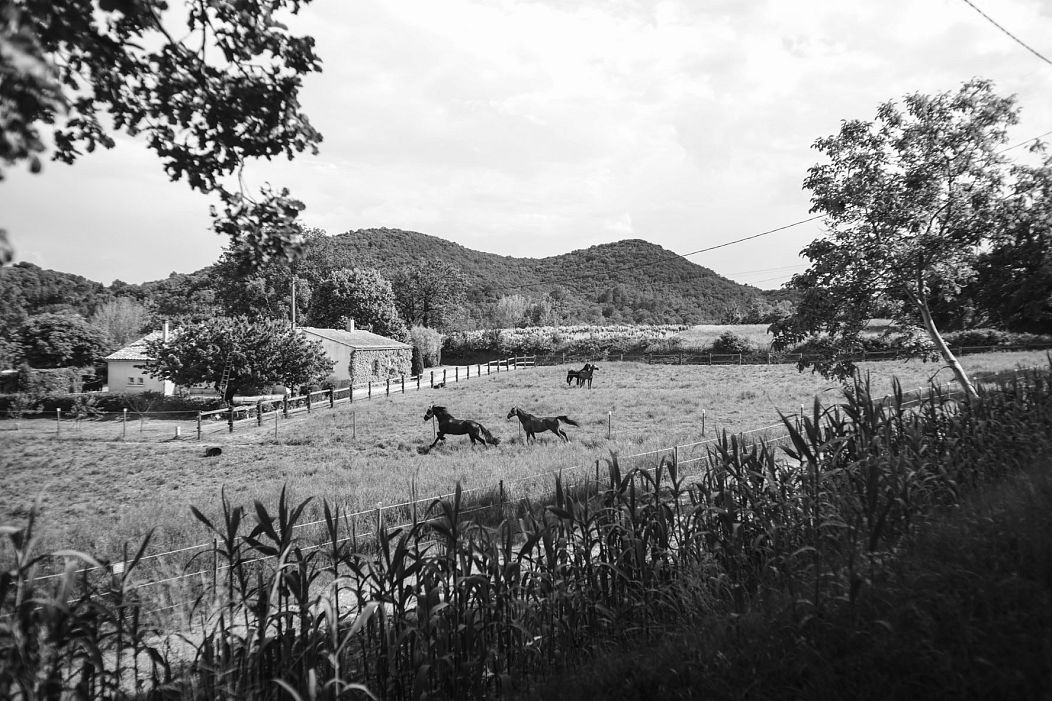Making a march: the photographers' perspective
After walking for more than 1,400 kilometres, the Solidarity March for Migrants is about to end. Twelve photographers from the French collective "item”, have been following them and offer a unique view of the march and its participants. We present the work of three of them and their testimony.
After walking for more than 1,400 kilometres, the Solidarity March for migrants (La Marche Solidaire pour les migrantes) is about to arrive at its final destination.
An initiative of the French group “L’Auberge des Migrants”, it encouraged people to join in and walk for any distance they wished. After starting in Italy at the end of April, the march has since crossed France and is due to arrive in Calais, on the north coast, on Sunday.
Those taking part want to highlight in particular the situation at the borders: between France and Italy, and France and the UK – meeting on their way those who support them, and those who think western Europe should reinforce those frontiers.
Twelve photographers from the French collective “item” have been following them and offer a unique view of the march and its participants. We present the work of three of them and their testimony.
Open your bags!
Adrienne Surprenant, a Canadian photographer from Montreal, asked the walkers to show the contents of their bags.
“The so-called ‘migrant crisis’ for me is rather a crisis of welcoming the migrants,” she says. Earlier I saw the photos of the belongings from the migrants’ bags. For them, these are the most important objects they managed to keep while crossing the Mediterranean. Without any embarrassment, the photographers asked people to expose their bags’ contents to the camera and then to the world. I decided to recreate this situation with the solidarity walkers.”
Her request usually caused deep discomfort. Very few people agreed to open their bags. They have also shared what they see in front of them while walking.
Bag N1 belongs to Carole Bruyère, 36, who walked for a day in France’s Beaujolais region between the towns of Villefranche-sur-Saône and Belleville – in her words for “people who suffered and walked so much – the migrants, the refugees”.
She says she thought a lot about them after she gave birth: “How would I do it facing this kind of conditions? Today, if we want to close our eyes on suffering, it’s very easy. This march is a very small contribution, just the beginning. I was overwhelmed by the feeling of helplessness. It was difficult to imagine all these people being in this situation and to do nothing at all.”
Carole’s view of the march: a group of people moving forward together, life, discussions, different voices.
Titourant Gaudillat, 17, is the owner of bag N2. She also walked for a day from Villefranche to Belleville: “Because mum and dad are walking,” she says.
Mathilde Toularastel, a 29-year-old midwife from Brittany, carries bag N 3. She is walking for three days together with a colleague she met during her “Midwives without borders” mission in Calais. She thinks that “every human being should be given a right to be recognised as such”.
Mathilde’s view: “Hope, men and women who meet, separate, who are getting to know each other without really getting to know each other.”
Marching icons
French documentary photographer Nicolas Leblanc French joined the march in Villefranche-sur-Saône, north of France second biggest city of Lyon.
"We walked along the Saône river for four days,” he says. “Four days of the same, repetitive landscape. A real trap for photography, for which tracing the sharpness of the landscape to give it a certain sense and aesthetic appeal is often the engine of the artistic process. But in this march, what brings out relief and change (in the landscape) is the walkers. On a daily basis new people join the group, varying their total number and the exchanges between them. That's what I work on to translate visually what is happening between them, in the human chain."
Here are the portraits of Maya and Anthony, both walking alone, but united by the same cause. Maya has joined the march to support the migrants. Anthony is a refugee from Sudan.
Maya says “Marching is symbolic, it means walking towards something. It is, of course, a very personal experience. A lot of things happen when we walk. We meet people. A lot of people. But we also meet ourselves”.
Leblanc sees the portraits of the marchers as icons. “Their posture and their position in the frame define them as such. Right from their first steps, I chose to play with them both in-shot and out-of-shot, to put a message in motion and help translate the exchanges, solidarity, mutual help and benevolence (kindness) that exists between each one. Whether it's done spontaneously or in staging the reality, the message remains the same: everyone helps everyone else."
Awakening
French photographer Jeremy Suyker has lived as a nomad since 2010. Recently he has worked in Iran, Burma, Sri Lanka and Central Asia. He chooses to show the march in black and white.
"The action of walking is anchored in time and space, with a beginning and an end. Beyond that, we don't know where we're going. We doubt, so we walk and as we walk we awaken... I wanted to account for this "awakening" by producing images that arouse mystery and foster ideas. What will happen after the walk? Maybe not much. But this tremendous collective effort will not have been in vain. It will go on in the hearts of people and in these images that testify to this need to move forward."











